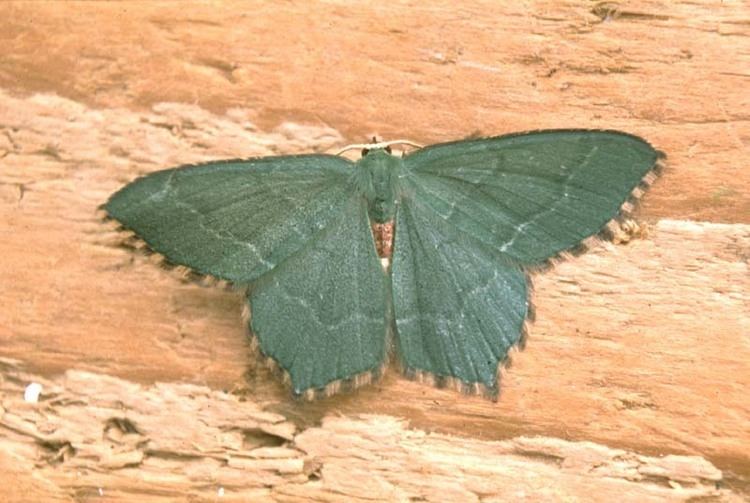Higher classification Hemithea | Family Geometridae Scientific name Hemithea aestivaria Rank Species | |
 | ||
Similar Hemithea, Butterflies and moths, Riband wave, Large emerald, Mottled beauty | ||
The common emerald (Hemithea aestivaria) is a moth of the family Geometridae. The species is found throughout the Nearctic and Palearctic regions and the Near East. It is mostly commonly found in the southern half of the British Isles. It was accidentally introduced into southern British Columbia in 1979.
All wings are generally dark green with grey and white chequered fringes and narrow white fascia, two on the forewing, one on the hindwing. The green colouration tends not to fade over time as much as in other emeralds. The hindwings have a sharply angled termen giving the moth a very distinctive shape. The wingspan is 30–35 mm. It flies at dusk and night in June and July [1] and will come to light.
The larva is green with reddish-brown markings and black v-shaped marks along the back. The young larva will feed on most plants but later it feeds on trees and shrubs. The species overwinters as a larva.
- ^ The flight season refers to the British Isles. This may vary in other parts of the range.
